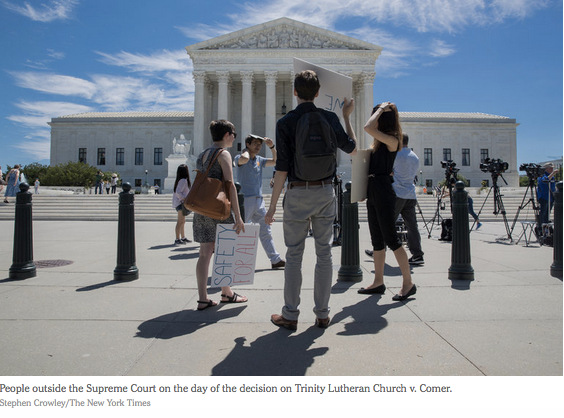I thought about the conversation with Justice Breyer as I read a decision the Supreme Court issued on the final day of its term. In Trinity Lutheran Church v. Comer, the court ruled that a church had a constitutional right to be considered on the same basis as secular institutions for a state grant to improve the safety of its preschool playground. The decision, with a majority opinion by Chief Justice John G. Roberts Jr., was a sharp departure from the line the Supreme Court has maintained against the direct funding of churches (the church had described the preschool as part of its religious mission, so there was no dispute in the case that the school fully shared the church’s identity).
Like most other states, Missouri, where the case arose, has a constitutional prohibition against public money going to churches. Invoking that provision, Missouri had deemed Trinity Lutheran categorically ineligible for the playground grant, although its preschool otherwise met the specified criteria. That exclusion put the church “to the choice between being a church and receiving a government benefit,” Chief Justice Roberts wrote. The court held that the exclusion amounted to discrimination against religion that was “odious to our Constitution,” a violation of the church’s First Amendment right to the free exercise of religion.




